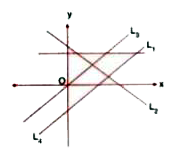2D,3L,4D,5D-6-Pentahhydroxyhexanal can give.
Tollen's Test
Lucas Test
2,4-DNP Test
FeCl2 Test
The correct Answer is:A,B
To solve the question regarding 2D, 3L, 4D, 5D-6-Pentahydroxyhexanal and the tests it can give, we will follow these steps:
Step 1: Understand the Structure
- The compound is named 2D, 3L, 4D, 5D-6-Pentahydroxyhexanal.
- "Hexanal" indicates that it is an aldehyde with 6 carbon atoms.
- The "pentahydroxy" indicates that there are five hydroxyl (OH) groups in the molecule.
- The "D" and "L" designations indicate the configuration of the hydroxyl groups at specific carbon atoms.
Step 2: Draw the Structure
- Start with a six-carbon chain (hexanal).
- Place the aldehyde group (CHO) at the first carbon.
- Add the hydroxyl groups according to the D and L configurations:
- At carbon 2, the OH group is on the right (D).
- At carbon 3, the OH group is on the left (L).
- At carbon 4, the OH group is on the right (D).
- At carbon 5, the OH group is on the right (D).
- Carbon 6 will have a hydroxymethyl group (CH2OH).
Step 3: Identify Functional Groups
- The molecule has one aldehyde group (CHO) and multiple alcohol groups (OH).
- The presence of both functional groups indicates that the compound can undergo specific chemical tests.
Step 4: Determine the Relevant Tests
- Tollens' Test: This test is positive for aldehydes. Since our compound has an aldehyde group, it will give a positive result in this test.
- Lukasz Test: This test is used for alcohols. Since our compound has several alcohol groups, it will also give a positive result in this test.
- 2,4-DNP Test: This test is used for both aldehydes and ketones, but since we are specifically looking for tests that are definitive for our compound, we will not consider this test as it is not exclusive to aldehydes.
- FeCl2 Test: This test is used for phenols and is not applicable here since our compound does not contain a phenolic group.
Step 5: Conclusion
- The tests that 2D, 3L, 4D, 5D-6-Pentahydroxyhexanal can give are:
- Tollens' Test (positive due to the aldehyde)
- Lukasz Test (positive due to the presence of alcohols)
Final Answer
2D, 3L, 4D, 5D-6-Pentahydroxyhexanal can give positive results for the Tollens' test and the Lukasz test.
---
- The compound is named 2D, 3L, 4D, 5D-6-Pentahydroxyhexanal.
- "Hexanal" indicates that it is an aldehyde with 6 carbon atoms.
- The "pentahydroxy" indicates that there are five hydroxyl (OH) groups in the molecule.
- The "D" and "L" designations indicate the configuration of the hydroxyl groups at specific carbon atoms.
- Start with a six-carbon chain (hexanal).
- Place the aldehyde group (CHO) at the first carbon.
- Add the hydroxyl groups according to the D and L configurations:
- At carbon 2, the OH group is on the right (D).
- At carbon 3, the OH group is on the left (L).
- At carbon 4, the OH group is on the right (D).
- At carbon 5, the OH group is on the right (D).
- Carbon 6 will have a hydroxymethyl group (CH2OH).
- The molecule has one aldehyde group (CHO) and multiple alcohol groups (OH).
- The presence of both functional groups indicates that the compound can undergo specific chemical tests.
- Tollens' Test: This test is positive for aldehydes. Since our compound has an aldehyde group, it will give a positive result in this test.
- Lukasz Test: This test is used for alcohols. Since our compound has several alcohol groups, it will also give a positive result in this test.
- 2,4-DNP Test: This test is used for both aldehydes and ketones, but since we are specifically looking for tests that are definitive for our compound, we will not consider this test as it is not exclusive to aldehydes.
- FeCl2 Test: This test is used for phenols and is not applicable here since our compound does not contain a phenolic group.
- The tests that 2D, 3L, 4D, 5D-6-Pentahydroxyhexanal can give are:
- Tollens' Test (positive due to the aldehyde)
- Lukasz Test (positive due to the presence of alcohols)
2D, 3L, 4D, 5D-6-Pentahydroxyhexanal can give positive results for the Tollens' test and the Lukasz test.
Topper's Solved these Questions
Similar Questions
four fair dice D1,D2,D3andD4 each having six faces numbered 1,2,3,4,5 and 6 are rolled simultaneously. The probability that D4 shows a number appearing on one of D1,D2,D3 is
View SolutionMatch the equations A, B, C and D with the lines L1,L2,L3andL4, whose graphs are roughly drawn in the given diagram.
A≡y=2x, B≡y−2x+2=0,
C≡3x+2y=6, D=y=2

View Solution
Knowledge Check
2c+3d=17
6c+5d=39
In the system of linear equations above. What is the value of 4c-4d?A-4B1C4D13
The vertices f the triangle are A(5,4,6), B(1,−1,3)nad C(4,3,2). The internal bisector of angle A meets BC at D. Find the coordinates of D and the length AD.
View Solution(a) The charges each Q are placed at x−d,2d,4d,…∞. Find electric potential at origin O.
(b) A charge +Q is placed at each of the points x=d,x=3d,x=5d,…..,∞ on the x-axis , and a charge −Q is placed at each of the points x=2d,x=4d,x=6d,...,∞.Find the electric potential at the origin O.
View SolutionA symmetric double convex lens is cut in two equal parts by a plane perpendiculr to the pricipal axis. If the power of the original lens was 4D, the power of a cut lens will be
a.2D b.3D c.4D d.5D
View SolutionProve that the points A(4,3),B(6,4),C(5,−6)andD(−3,5) in that order are the vertices of a parallelogram.
View SolutionWrite the first three terms of the AP's, when a and d are as given below
(i) a=12,d=−16
(ii) a=−5,d=−3
View SolutionIf A=⎡⎢⎣3−342−340−11⎤⎥⎦ , then a. adj(adjA)=A b. |adj(adjA)|=1 c. adjA=I d. none of these
View SolutionThe length of the diagonal of a square is d units. The area of the square is (a)d2 (b) 12d2 (c)14d2 (d) 2d2
View Solution
